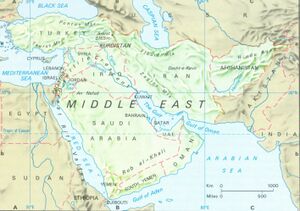Ketumala
| Author:Laxman Burdak, IFS (R) |

Ketumala (केतुमाल) is a pilgrim mentioned in Mahabharata. Puranas mention it as a division of Jambudvipa. It is probably located in region between Caspian Sea and Afghanistan.
Origin
Variants
- Ketumala (केतुमाल) (AS, p.222)
- Bagdhi (बग्धि) / Bakhtri (बख्त्रि): Sanskrit name Ketumala (केतुमाल) and Vahlika (वह्लीक), Old Persian Bakhtri (बख्त्रि) and Bactria (बैकट्रिया) in Greek.[1] It is same as Iranian Balkh and Indian Vahlika (वह्लीक). This is the region lying between the river Oxus and the Hindukush comprises Pauranic Ketumala (केतुमाल) Varsa. The town of Bacteria, for Iranians--the mother of cities, was situated on the southern side of the river Oxus.
History
Tej Ram Sharma[2]mentions about Jambu River....Sumeru is identified with Rudra Himalaya in Garhwal, where the river Ganga has its source, it is near Badarikasrama. [3] According to the Matsya Purana [4] the Sumeru Parvata is bounded on the north by Uttara-Kuru, on the South by Bharatavarsa, on the west by Ketumala and on the east by Bhadrasvavarsa. [5] It is also mentioned in the Padmapurana. [6] and the Kalikapurana. [7] According to the Kalikapurana Siva saw the summit of it. We also learn from this text that the Jambu river flows from this mountain.
केतुमाल
विजयेन्द्र कुमार माथुर[8] ने लेख किया है ...केतुमाल (AS, p.222) पौराणिक भूगोल के अनुसार जंबुद्वीप का एक विभाग है। विष्णुपुराण 2, 2, 37 के अनुसार चक्षु नदी (वंक्षु या आक्सस या आमू दरया) केतुमाल में प्रवाहित है-‘चक्षुश्च पश्चिमगिरीनतीत्य सकलांस्तत: पश्चियं केतुमालाक्ष्यं वर्ष गत्वैति सागरम्’।
आमू या चक्षु नदी रूस के दक्षिणी भाग कैस्पियन सागर के पूर्व की ओर के प्रदेश में बहती है और इस प्रकार केतुमाल की स्थिति केस्पियन और अफ़ग़ानिस्तान के बीच के भूभाग में मानी जा सकती है। विष्णुपुराण 2, 2, 35 में चक्षु का पश्चिम की ओर, और सीता या तरिम नदी को पूर्व की ओर माना है जो भौगोलिक तथ्य है।
जाट इतिहास
ठाकुर देशराज[9] ने लिखा है....जम्बू द्वीप आगे चलकर अग्निध्र के नौ पुत्रों में इस भांति बट गया-
1. भरतखण्ड के उपर वाला देश किम्पुरूष को मिला, जो उसी के नाम पर किम्पुरूष कहलाया। यही बात शेष 8 भागों के सम्बन्ध में भी है। जो देश जिसको मिला उसी के नाम पर उस देश का भी नाम पड़ गया,
2. हरिवर्ष को निषध पर्वत वाला देश (हरिवर्ष),
3. जिस देश के बीच में सुमेर पर्वत है और जो सबके बीच में है, वह इलावृत को,
4. नील पर्वत वाला रम्य देश, रम्य को,
5. श्वेताचल को बीच में रखने वाला तथा रम्य के उत्तर का हिरण्यवान देश, हिरण्यवान को,
6. श्रृंगवान पर्वत वाला सबके उत्तर समुद्री तट पर बसा हुआ कुरू-प्रदेश, कुरू को,
7. भद्राश्व जो कि सुमेरू का पूर्वी खण्ड है, भद्राश्व को,
8. इलावृत के पच्छिम सुमेर पर्वत वाला केतुमाल को और,
9. हिमालय के दक्षिण समुद्र का फैला हुआ भरतखण्ड नाभि को मिला ।
ठाकुर देशराज[10] ने लिखा है.... हरिवर्ष को ऐतिहासिक लोग यूरोप मानते है।[11] मानसरोवर के पच्छिम और सुमेर पर्वत के बीच के देश रम्य और भद्राश्व थे। यह काश्मीर का उत्तरी प्रदेश रहा होगा। केतुमाल देश को एशियाई माइनर समझना चाहिए। यह वर्तमान रूस का दक्षिणी-पूर्वी भाग था, क्योंकि पुराण इसे इलावृत के पच्छिम में बताते हैं।5 कुरू आज का मध्य-ऐशिया अथवा पूर्वी साइबेरिया था। इस विष्णु-पुराण ने समुद्र के किनारे और सब देशों के उत्तर में बताया है। किम्पुरूषवर्ष तातारियों का देश समझना चाहिए। इसका पता उसी पुराण में भारत के उत्तर में सबसे पहले के स्थान में बताया है। इलावृत को सुमेर के चतुर्दिक फैला हुआ प्रदेश माना गया है
आर्यों की दूसरी टोली इलावृत देश से भारत में आई बताई जाती है। पुराणों में विवस्वान मनु का भी स्थान सुमेर पर्वत बताया जाता है, जो कि इलावृत के मध्य में कहा गया है। इस तरह पहली टोली के मान्व-आर्य और दूसरी टोली के ऐल-आर्य एक ही महादेश के निवासी सिद्व होते हैं, किन्तु ऐल लोगों के साथ कुरू लोगों का भी एक बड़ा भाग था। मालूम ऐसा होता है, ऐल की कुरू देश में बसने के कारण कुरू कहलाते थे। पुराणों में इला का चन्द्र पुत्र बुध की स्त्री कहा गया है। इल-बुध सहवास से पुरूरवा हुए। भारत के समस्त चन्द्रवंशी क्षत्रिय पुरूरवा की ही संतति माने जाते हैं।
In Mahabharata
Ketumala (केतुमाल) (Tirtha) in Mahabharata (III.87.12),
Vana Parva, Mahabharata/Book III Chapter 87 mentions the Sacred spots in the west. Ketumala (केतुमाल) (Tirtha) is in Mahabharata (III.87.12) [12]....O mighty king, is the region called Jamvumarga (जम्बू मार्ग) (III.87.11), inhabited by birds and deer, and which constitutes the retreat of ascetics with souls under control, O thou foremost of those that have subdued their senses! Next lie the exceedingly sacred Ketumala (केतुमाल) (III.87.12), and Medhya (मेध्य) (III.87.12) ever graced with ascetics, and, O lord of earth, Gangaranya (गङ्गारण्य) (3.87.12)....
External links
References
- ↑ परोपकारी, अप्रेल प्रथम 2019, s.n. 2, p.6
- ↑ Personal and geographical names in the Gupta inscriptions/Names of the Rivers and the Mountains,p.299
- ↑ Mahabharata, Santi-Parvan, chs. 335, 336 : Geographical Dictionary of Ancient and Medieval India by N. L. Dey, p. 196.
- ↑ Ch. 113.
- ↑ Geographical Dictionary of Ancient and Medieval India by N. L. Dey. pp. 196-97 ; Ethnic Settlements in Ancient India by S. B. Chaudhuri. p. 87.
- ↑ Uttarakanda, verses 35-38.
- ↑ Ch. 13.23, Ch. 19.92.
- ↑ Aitihasik Sthanavali by Vijayendra Kumar Mathur, p.222
- ↑ Jat History Thakur Deshraj/Chapter I,p.4
- ↑ Jat History Thakur Deshraj/Chapter I,p.5
- ↑ . 'भारतवर्ष का इतिहास' भाई परमानन्द रचित (प्रकरण दूसरा)
- ↑ ततः पुण्यतमा राजन सततं तापसायुता, केतुमाला च मेध्या च गङ्गारण्यं च भूमिप (III.87.12)